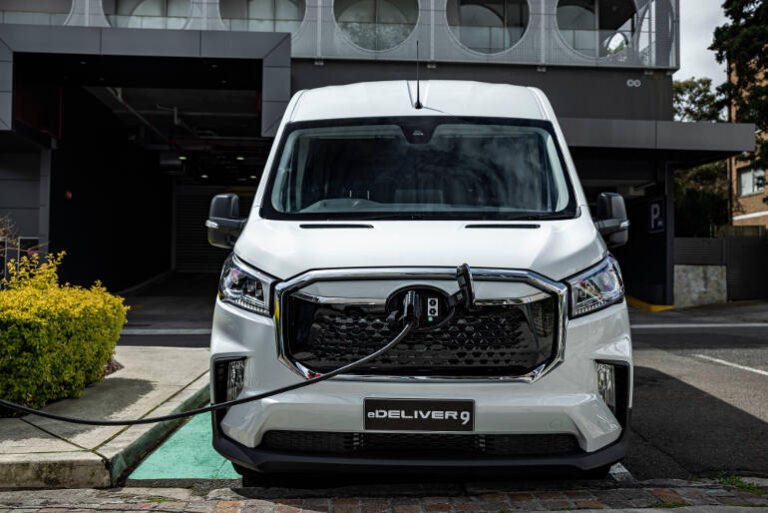As fleet operators transition to electric vehicles (EVs), understanding the distinct charging requirements of electric passenger cars and electric vans is critical. While both vehicle types benefit from electrification, their operational demands, charging infrastructure, and energy consumption differ significantly. Peter McDonald, Director at Ohme, provided Fleet EV News with insights from the UK and European markets, highlighting the challenges and best practices for fleet electrification.
Energy Consumption and Battery Capacity
One of the most significant differences between fleet passenger cars and electric vans is energy consumption and battery capacity. Passenger EVs typically have smaller battery packs, ranging from 40 kWh to 80 kWh, whereas electric vans often feature larger batteries, sometimes exceeding 100 kWh, to support higher payloads and longer routes.
McDonald explained: *“Electric vans are heavier and carry payloads, so they consume more energy. That means they require bigger batteries, but also more charging time and infrastructure support.”*
Passenger Cars
- Lower energy consumption per kilometre due to lighter weight and aerodynamic design.
- Smaller battery packs allow for faster charging times at lower power outputs.
- Suited for regular overnight charging at home or workplace chargers.
Electric Vans
- Higher energy consumption due to increased weight and cargo demands.
- Larger battery packs require longer charging times or higher power charging solutions.
- Often rely on depot or public fast charging to sustain operational needs.
Charging Infrastructure Requirements
Passenger cars and vans also differ in their charging infrastructure requirements, influenced by their respective operational use cases.
McDonald noted: “If a fleet van driver can’t charge at home, they have to rely on public chargers, which are more expensive and reduce workforce efficiency. A passenger car driver can sit in a café with a laptop, but a van driver is losing productive time while waiting for a charge.”
Passenger Cars
- Can utilise standard home chargers (7 kW) or workplace charging stations.
- Often have the flexibility to charge at public AC or DC fast chargers when necessary.
- Less dependent on ultra-fast DC charging, except for high-mileage users.
Electric Vans
- Require higher-capacity depot chargers (11 kW or 22 kW AC) to charge efficiently overnight.
- More frequent use of public DC fast chargers (50 kW to 350 kW) to sustain daily operations.
- Need dedicated fleet charging infrastructure to avoid downtime during working hours.
Operational Impact of Charging Time
Charging downtime is a crucial consideration for fleet managers when transitioning to EVs, as it directly impacts operational efficiency.
McDonald highlighted: “Some van fleets in the UK allocated vehicles to routes where charging downtime would be minimal. They learned that vans doing lots of short trips barely used their range, which made them perfect for early EV adoption.”
Passenger Cars
- Typically have longer idle periods, allowing for slow overnight charging.
- Drivers can plan charging during off-peak hours, reducing costs and grid impact.
Electric Vans
- Require rapid charging solutions to minimise downtime during operational hours.
- May need scheduled charging stops during shifts to ensure range sufficiency.
- Higher reliance on workplace and depot charging rather than home charging.
Total Cost of Ownership and Charging Costs
While EVs generally offer lower running costs than internal combustion engine (ICE) vehicles, charging strategies influence overall costs.
McDonald stated: “If vans have to rely on public chargers, the costs add up fast. Fleets need to plan home, depot, and public charging smartly to keep expenses down.”
Passenger Cars
- Benefit from lower charging costs when charged overnight at home or workplace rates.
- Minimal reliance on expensive public fast charging.
Electric Vans
- Higher electricity demand increases overall charging costs.
- Greater reliance on rapid charging solutions, which may be costlier per kWh.
- Fleet managers need to optimise charging schedules to reduce peak-hour energy costs.
While both fleet passenger cars and electric vans contribute to sustainability and cost savings, their charging strategies must be tailored to meet distinct operational needs. Passenger cars can leverage home and workplace charging efficiently, while electric vans require robust depot and public charging solutions to support their intensive usage.
McDonald’s key advice to Fleet Managers: “Start with a small number of EVs, place them with the right drivers, and build from there. The worst mistake is buying 100 electric vans without a charging strategy.”
Fleet Managers must plan their charging infrastructure investments carefully to ensure optimal fleet performance and cost efficiency.






